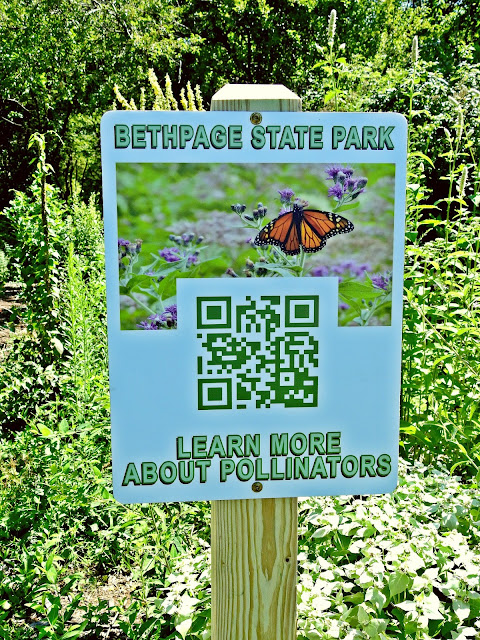Monarch Hotspots at Bethpage State Park!
When temperatures are warm and milkweed plants grow, Bethpage State Park (BSP) becomes a bountiful haven for the majestic Monarch Butterfly.

Between perennial gardens and wildflower patches, flower boxes and golf course roughs, our park offers dozens of forage which becomes an extravagant buffet for butterflies! Yet, Monarchs also use BSP for shelter; a safe space to oviposit eggs and complete metamorphosis.
This allows me to monitor different levels of monarch activity all throughout BSP. While this process takes time and patience, it is a real treat late summer-early fall when butterfly numbers surge. This year two specific spots stand out in mind! One hotspot is Bethpage State Park's Picnic Pollinator Garden.
This extensive habitat is a beautiful space we created just for pollinators.
With dedication and laborious effort, we have been able to include all the native plants you can think of : Lupines, Coneflowers, Blazing Stars (pictured above), Mountain Mint, Asters, Goldenrods, Sage and Milkweed (pictured below)--
You name it, we have it!
Providing this mix of flower diversity means our garden blooms not all at once, but for 6 months of the year! This steady forage supply is critical, especially late in the game, when other locations have run out of nectar sources.
Additionally, our Picnic Pollinator Garden was enlarged this year with newly planted flowers! This was a benefit as female Monarchs will often seek out the freshest, most tender milkweed plants to lay eggs on. This is what appeared to have happened here, as many caterpillars were found feeding weeks prior to the adult Monarchs counts being so high.
Three hungry Monarch caterpillars on just one Butterflyweed plant! Butterflyweed is a species in the Milkweed family. It is one the few native host plants for Monarch larvae in New York.
The second hotspot of the year was our small Mechanic Shop Flower Box. This box sits all to itself, not far from #3 Tee on the Black Course. I'm inclined to believe Monarchs favor this area because it is outside the realm of most predators. The flower box is also protected from the elements and is annually planted with Tropical Milkweed and Lantanas (which is forage for most native butterflies).
Perhaps the most favorable feature of this flower box is that it is adjacent to structures that Monarch can pupate on. That's right...Monarchs will create their chrysalis or pupae on any stable structure, not just plants. In the wild, it is much harder to locate a chrysalis as it could be hidden on any stalk or tough blade of grass. However, here by the shop, I am able to find many in one spot and on the strangest of surfaces too! This year pupae were spotted on window ledges, lights, the edge of the flower box, the roof of the shop, even on a stationary mower wheel (take a closer look, with the photo below). Caterpillars will hang, in a "J" position, right before shifting into the chrysalis stage.
From egg to butterfly, the stages a Monarch goes through is one of my favorite transformations to witness in nature. No matter how many seasons I collect data, my fascination for this butterfly just grows. I hope you too, have enjoyed seeing Monarchs flutter around Bethpage State Park and have appreciated learning about the wonder of this species! This time right now, Monarchs are actually on their long journey down to overwintering sites in Mexico. Untill next time...












This is great - been going to the pollinator area for years now, mainly because there are many medicinal plants (and of course, the wonderful pollinators themselves). I noticed there is a lot more teasel this year than before which is nice to see!
ReplyDeleteThank you Liana for your lovely feedback! We are so happy to hear you are enjoying the pollinator garden and are observing different species throughout the years--we also noticed the same. Thanks for being a valued visitor :) We are excited for whats ahead, come springtime 2021 ...we hope you are too! Best wishes.
Delete